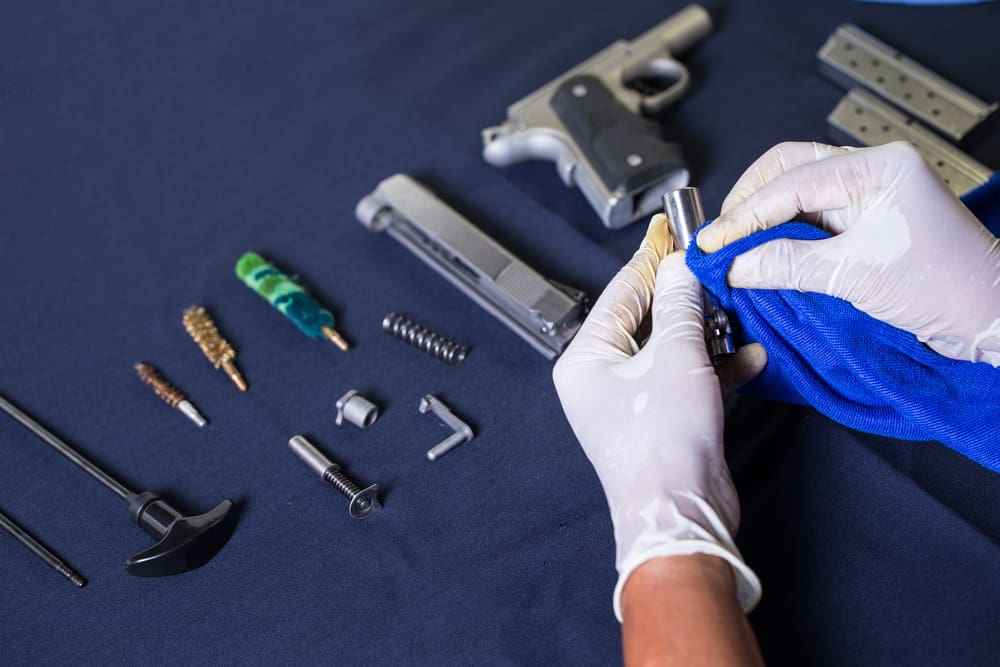Dry cleaning is the laundry method of choice for those who wear high-quality clothing that could be damaged from contact with water.
This high-end cleaning process is so effective it almost seems magical.
And unless you’ve gone behind the counter at your local dry cleaner shop, the details of the practice can seem like a mystery.
Here we will explain the mystery of dry cleaning in 5 simple steps.
But first…
Let’s talk about what dry cleaning actually is.
Page Contents:
So What is Dry Cleaning?
Dry cleaning is a method of cleaning clothes and fabrics without the use of traditional soap and water, hence the term “dry.”
However, this term is slightly misleading, as the process simply substitutes these components for liquid chemicals to remove stains and sanitize clothes.
The result is a fabric or material that becomes clean while remaining unaffected in shape and structure.
For example:
It could be catastrophic if you get caught out in the rain in a suede jacket, but a trip to the dry cleaners will refresh the garment and include a nice finish.
How Dry Cleaning Works
Dry cleaning is a standardized industry, meaning the vast majority of dry cleaners follow the exact same process no matter where you are in the world.
These are the 5 steps of the dry cleaning process:
1. Intake and Labeling
When you drop off your clothes or fabrics at the dry cleaners, the first thing they will do is tag your items with a label on the hanger. This is to separate your items from someone else’s and prevent any mix-ups from occurring.
The tag will usually have identifying information about the customer and the items themselves, as well as other information like the date the items were dropped off and the date they will be picked up.
Afterward, the dry cleaner will inspect your items for any mechanical damages such as:
- Rips
- Stains
- Missing buttons
- Or torn Seams
Usually, these will be repaired during their time at the dry cleaners, or at the very least they will be documented ahead of time so the dry cleaner won’t be held responsible for any pre-existing damage.
Then, the dry cleaner will hang your items on the rack.
2. Pre-Treatment
If any of your items have stains on them that need to be addressed before the actual dry cleaning takes place, the dry cleaner will give them a treatment.
Depending on the contents of the stain, they will apply a stain remover or other chemical to remove the stain from the fabric. They will also note the pre-treatment on the item’s tag so that the stain can be reviewed after dry cleaning to ensure that it fully comes out.
If you know there are stains on your items when dropping them at the dry cleaner, you should tell them about it and what the stain is, whether it’s coffee, wine, or chocolate stains.
The chemical composition of the stain determines what kind of pre-treatment is best to remove it since certain chemicals interact differently with each other, including those used during the dry cleaning process.
3. Dry Cleaning
After the pre-treatment, your clothes are moved onto a rack inside a basket in which the automated dry cleaning takes place. The basket is metal and holds up to 100 lbs of weight, and it has perforated holes throughout the sides of it like a colander.
The basket is then lowered into a tank and the chemical solvent is pumped through the tank repeatedly. The solvent goes through a filter that catches any rubbish removed from the fabrics so that it is squeaky clean each time that it comes into contact with the clothing.
Once the cycle is complete, the tank drains and initiates the dry cycle, circulating warm air to vaporize any remaining liquid from the fabrics.
4. Spot Treatment
After the dry cleaning, the dry cleaner will do a spot treatment to review any stains found on the clothing. Some stains can only be removed after the dry cleaning process due to their chemical composition.
In some cases, the dry cleaner will use a special remover called an anhydrous emulsifier to get out water-based stains.
5. Finishing
The final step your items take at the dry cleaners is finishing. This involves using pressure and sometimes steam to reshape the garment into its proper structure and remove wrinkles to make them ready to wear.
This process differs widely depending on the type of garment and fabric.
If steam is used, the steam will be removed from the garment afterward with a vacuum.
How Long Does Dry Cleaning Take?
The amount of time it takes to dry clean an item depends on the type of item.
For regular wardrobe items, the turnaround time is 1-2 business days.
For formalwear such as formal dresses or tuxedos, a few more days are required until the garment is ready for pickup.
Large items such as drapes or linens can take up to 7 days, while items with delicate fabrics like leather or fur or with special details like beading can take multiple weeks.
How Much Does Dry Cleaning Cost?
Again, the cost of dry cleaning depends on the type of item, since each item has to be cleaned differently and takes more or less time to complete. Everyday clothes like shirts, pants, and sweaters can cost from $5 to $25 per item.
Suits usually fall between $10 and $35, coats up to $50, and wedding dresses between $100 and $500.
Comforters and other large items are often charged by the foot since there is a large variation in size among these items and the type of fabric they’re made from.












